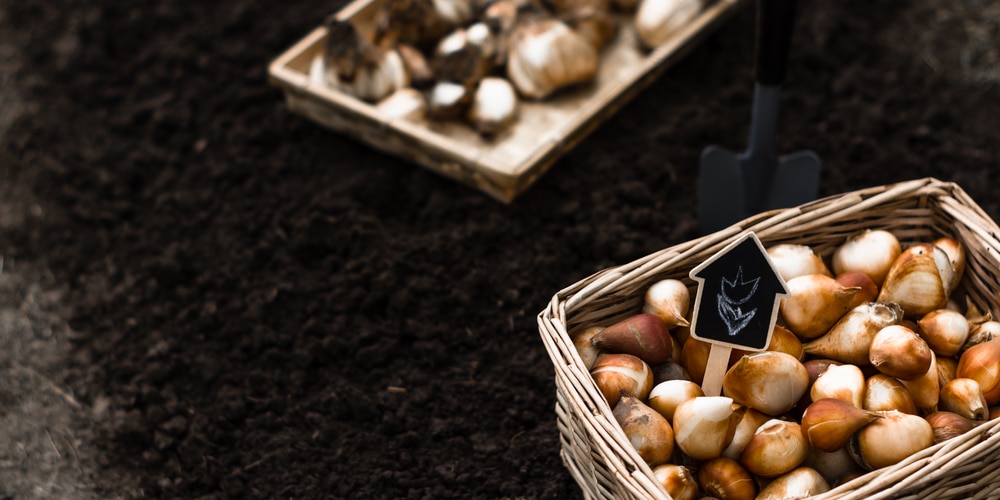There are no doubts about the beauty of tulips, which are one of the earliest symptoms of the arrival of spring. But what do you do when the tulip season is over? Did you know that if you take care of your tulips after they bloom, you can make them perennial plants that will delight you with their flowers every year?
Keep reading this essential guide we put together for you to learn more about the topic!
How To Care For Tulips After They Bloom
Taking adequate care of tulips after they bloom will help you keep them healthy and strong for the next flowering season. The process is simple, but it entails a couple of crucial steps you must be aware of to avoid harming your plants.
Deadhead the Flowers
To begin with, you must deadhead your tulips using shears. Do not trim the leaves, but avoid leaving spent flowers on your plants. While it might sound like the most natural thing to do, it will force the formation of seeds.
And there is nothing wrong with them, but they tend to suck precious energy from the bulbs, meaning they might struggle to produce more blooms the following year.
Deal with the Foliage
Instead, foliage and stems should remain on the plant for more time: they produce power through photosynthesis which your tulips will use to keep the bulbs healthy. Wait for the leaves to die back naturally.
Usually, after a couple of weeks of deadheading the flowers, the foliage will become yellow or brownish. You can cut it to the ground in such conditions to allow the bulbs enough time to absorb the energy and necessary nutrients to produce more blooms the following year.
Manage your Bulbs
If you don’t live in a region with heavy rainfall, you can leave your bulbs on the ground and wait for them to “revive” the following season. On the other hand, if you know the soil will become wet during the summer, dig them and store them in a dark and dry place. To get new blooms in the summer, plant them again during the fall.
Don’t forget that tulips thrive in arid conditions. So if you want to be on the safe side and get blooms for longer, we recommend you dig them up after they flower. Keep in mind that it might not be possible for tulips in containers.
Due to the constrained environment, tulips will struggle to survive for more than one year in a pot. So, they will rarely bloom again, even if you dig them out. If you don’t have the space to plant them in the ground, you’ll be better off choosing fresh bulbs each fall.
Fertilize Your Plants
You can even add a high-quality fertilizer suitable for bulbs to get better results. Remember to follow the instructions you find on the product’s label and avoid overdoing it.
Also, keep your bubs moist to increase absorption. Alternatively, you can use compost or manure. Indeed, such organic solutions won’t harm your plants. Instead, they will increase water retention and improve drainage while providing your plants with all they need to thrive.
Do not apply fertilizer too close to the bulb: it might burn its roots! Add the product after your tulips bloom: you might get offsets!
How To Dig Bulbs From the Ground
After you have deadhead the flowers and waited for the foliage to die back, you should take the bulbs from the ground and store them correctly. Don’t forget that digging them too early may cause them not to bloom again. So, be patient! Usually, the best time to take bulbs is about 4-6 weeks after flowering.
Lift the bulbs carefully. Use a spade or a fork to loosen the soil and pick each tulip. Most will have plenty of offsets (or children) which you should be careful not to damage.
After all, the mother bulb won’t give you flowers anymore, so you’ll have to separate each offset from the center. When you take the bulbs from the soil, brush them to remove any dirt and let them air-dry. If there is some foliage left, trim it.
How to Store Your Bulbs
Store your bulbs in a dark and ventilated place, better if dry. Do not let direct sunlight get to your tulips as it might burn them. If you notice signs of rotting, toss the bulbs away.
Also, separate the larger offsets from the smaller ones. The first will probably give you flowers the following season, while the latter will have to spend more time on the ground to mature.
You can store your tulip bulbs in a paper, mesh, or string net bag. The idea is to use breathable materials that won’t trap moisture, which can cause severe issues to your plants. Avoid placing them in plastic bags or bins as they usually don’t allow much airflow.
Keep your bulbs in such conditions until the soil temperature is low enough to re-plant bulbs in the ground. You can expect that to happen between late September and early October. Of course, the final dates will depend on where you live.
Related article: Will Frost Kill Tulips?

